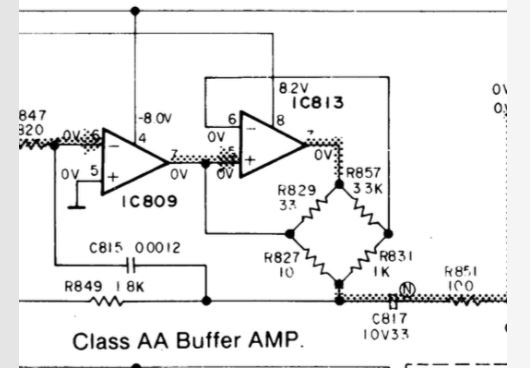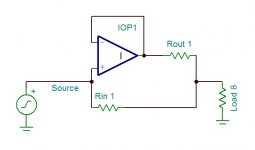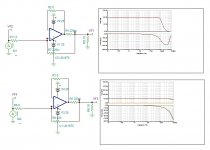This two resistor opamp circuit multiplies the input current by ( Rin/Rout+1).
The source sees the load impedance multiplied by the same factor and the load sees the source with the inverse factor. Bellow are two example as ×2 and ×1000 factors.
Hayk
Attachments
Broskie (TubeCAD) has written on this in the last year or so. Specifically to work a small tube power stage "master" with a large transistor stage "slave" (sorry for the rude language). He keeps moaning about how few good power amps will work at unity gain. It "can" be done with gain, and he is working at it, but it requires precision gain setting.
I had the same idea back around 2001, and had notes in email, but my email program has lost the key attachment; I didn't get any further than Broskie has anyway.
I was 99% sure I/we got it from The Old Men. But it is not in the Greene/Burr-Brown book nor a few other likely sources.
I had the same idea back around 2001, and had notes in email, but my email program has lost the key attachment; I didn't get any further than Broskie has anyway.
I was 99% sure I/we got it from The Old Men. But it is not in the Greene/Burr-Brown book nor a few other likely sources.
Last edited:
This is class AA buffer of Technics dating the precedent century.

It was used in CD player output. The principle is far different than my multiplier. The opamp simulates a negative resistance in proportion to the main's resistance, if they are equaled the driving opamp sees the load infinity. If it simulates half of it, the two share the load. See applications The LM1875 for best
Mine is much basic. In fact I asked with class AA type to be given a star if like, only one reader gave, so I remembered Faux French saying , The diy's need to understand how the circuit works. This why I created a simpler than the class AA.
see also Class AA Opamp Schematic
It was used in CD player output. The principle is far different than my multiplier. The opamp simulates a negative resistance in proportion to the main's resistance, if they are equaled the driving opamp sees the load infinity. If it simulates half of it, the two share the load. See applications The LM1875 for best
Mine is much basic. In fact I asked with class AA type to be given a star if like, only one reader gave, so I remembered Faux French saying , The diy's need to understand how the circuit works. This why I created a simpler than the class AA.
see also Class AA Opamp Schematic
Last edited:
- Home
- Amplifiers
- Solid State
- /Haps A New Basic Opamp App: The Floating Interactive Current Multiplier.


